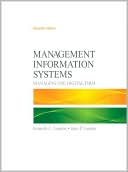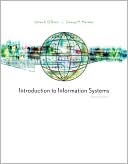Leading Geeks: How to Manage and Lead the People Who Deliver Technology
In today's business climate, technology drives productivity and competitiveness and "geeks" drive technology. More than ever Geeks-those people who research, develop, design, build, test, install, and support technology-are a critical factor in every organization's success. Leading Geeks challenges the conventional wisdom that leadership methods are universal and gives executives and managers the understanding they need to manage and lead the technologists upon whom they have become so...
Search in google:
In today's business climate, technology drives productivity, and competitiveness and 'geeks' drive technology. More than ever, geeks— those people who research, develop, design, build, test, install, and support technology— are a critical factor in every organization's success.Leading Geeks challenges the conventional wisdom that leadership methods are universal and gives executives and managers the understanding they need to manage and lead the technologists on whom they have become so dependent.This much-needed book— written in nontechnical language by Paul Glen, a highly acclaimed management consultant— gives clear directions on how to effectively lead these brilliant yet notoriously resistant-to-being-managed knowledge workers. Glen not only provides proven management strategies but also background on why traditional approaches often don't work with geeks.Leading Geeks describes the beliefs and behavior of geeks, their group dynamics, and the unique nature of technical work. It also offers a unique twelve-part model that explains how knowledge workers deliver value to an organization.Leading Geeks clarifies the responsibilities and tasks of the geek leader and contrasts them to conventional approaches to leadership. Glen also shows you how to* Motivate geeks to be productive* Facilitate productivity within technical groups* Represent geeks to the world outside the lab and cubicle* Manage ambiguity to create an environment in which geeks and leaders thrive* Structure groups of geeks to support an organizationLeading Geeks gives managers the tools they need to transform the chaos of the creative workplace into a coherent and compelling place for geeks to work. Publishers Weekly Technology has so clearly woven itself into the fabric of business culture that publishing Glen's book on how to manage the people who produce high tech makes perfect sense. The author, founder of a consulting firm specializing in IT organizations, assumes that "geeks" are not everyday people, and draws on his experience to present clear and simple techniques for employers to not just get what they need out of tech workers but to become the kind of managers who will mesh well with this new kind of employee. Glen's insight is to treat high technology as a creative product produced by temperamental people who are a cross between artists and professionals. This view stems from the ambiguity of "geekwork" and the fact that geeks usually know more about what they do than do their managers. Though Glen doesn't advocate turning the factories over to the workers, his aim is to make managers more effective by teaching them about the people they lead, not by giving them tools to bend employees to their will. He does an excellent job of enumerating geek characteristics and the context in which geekwork takes place, providing ample material on what works with geeks and what doesn't, such as "intrinsic" or "extrinsic" motivators, and valuable advice, like "never underestimate the power of free food." Though it doesn't contain much new material, Glen's easily readable book will prove exceptionally useful for managers who feel left behind by the pace of technology or bosses seeking to better understand their information age employees. (Nov.) Copyright 2002 Cahners Business Information.
\ Chapter 1\ Geeks, Leadership,and Geek Leadership\ \ I hope that you have begun this book with a head full of questions:\ \ What's different about leading geeks from leading anyone else?\ What can I do to better leverage my organization's investment in these expensive, valuable, and temperamental employees?\ What makes geeks so difficult to manage? You might even have some skeptical thoughts like these:\ What can this book teach me about leading geeks?\ Leadership is leadership, isn't it?\ \ I welcome such questions--not because I think that I have every answer, but because that means you've already begun to consider how you interact with geeks or how you could. You're on your way to thinking about how the ideas and concepts in this book apply to you and your organization and how they might apply in the future.\ This chapter lays the foundation by addressing some of these fundamental questions and explaining important concepts: who geeks are, why leading them is important, and how leadership of geeks differs from other types of leadership.\ Geeks\ Let's start out with geeks. The first thing to think about is who they are and why they are so important to your enterprise.\ Who Are Geeks?\ Geeks are the knowledge workers who specialize in the creation, maintenance, or support of high technology. They have job titles like programmer, product manager, project manager, quality assurance engineer, system designer, system architect, program manager, technical writer, help desk technician, deployment specialist, trainer, network manager, Web designer, database administrator,desktop support technician, or telecommunications specialist. Some of them may carry titles like chief information officer (CIO), chief knowledge officer (CKO), chief technical officer (CTO), development director, operations manager, and, on rare occasions, chief executive officer (CEO).\ Thirty years ago, most geeks who found their way into the business world were part of the accounting department and were kept out of sight in the basement, tending to a single massive computer secured behind locked doors in an air-conditioned room. They were rarely seen outside their isolated environment and were known only by the people who read the piles of reports generated on wide green-lined paper.\ Today they are everywhere. They may still be clustered in one large department or scattered as members of functional departments like accounting, marketing, product development, or manufacturing. Everyone knows who they are. They are the people you go to when your desktop computer or laptop stops working. The people you call when you think you might have a virus infecting your system. They're the people you consult when you dream up a new way of helping your clients by putting previously unavailable information on a Web site. You call them when you realize that you could save labor and costs by adding only one field to a screen of a current application.\ If your company's product is high tech, you'll find them in product development, research, engineering, distribution, manufacturing, and support. Whether or not you sell a high-tech product or service, you will usually find them in the information technology (IT) department and probably working with accounting, finance, marketing, sales, and customer service.\ In short, geeks are the highly intelligent, usually introverted, extremely valuable, independent-minded, hard-to-find, difficult-to-keep technology workers who are essential to the future of your company.\ Why Geeks Matter\ Despite all the hype and hurry surrounding the new economy, a few simple truths shine through the fog:\ \ Over the past three decades, the pace of technological change has increased.\ Technological innovation remains one of the most important components of an organization's ability to compete in the marketplace.\ Geeks are the people who deliver technological innovation.\ \ Since the invention of the computer during World War II, information technology has been slowly penetrating organizations and transforming products, production methods, organizational structures, product flows, interorganizational relationships, customer relationships, and strategies. As computers have decreased in price and increased in power dramatically over this period, ever more creative applications have been built to reduce cost, improve service, develop new products, analyze data, and provide organizational infrastructure for communication.\ And as information technology has enabled so many innovations, companies have become dependent on the people who create, maintain, and support these computers. It's the geeks who make it all go. Geeks have become among the most important human resources within almost every organization. As the technology they supply and support has become indispensable to almost every function of a company, geeks themselves have become indispensable too.\ As they have moved further into organizations' functional areas, more and more managers come into contact with these unique and valuable employees. But they remain a mystery to most managers. Not only do they control strange, intricate, fragile, expensive, and indispensable systems, but as individuals they often prove hard to fathom. Corporate leaders, department managers, and functional managers who are perfectly capable of leading and managing in their area of specialty find geeks difficult to work with. Yet every leader, every sales manager, manufacturing manager, marketing specialist, accounting manager, customer service manager, purchasing manager, logistics manager, and human resource specialist must now be able to lead geeks. As each functional specialty within an organization becomes increasingly reliant on technology for its success, each person within those functional areas becomes reliant on his or her ability to interact with and lead geeks.\ The Innovation Imperative\ Whether or not you realize it, at this very moment, your organization is battling for its existence. No matter how profitable it has been, no matter how fast it has grown, no matter how loyal your employees, adoring your customers, or stratospheric your stock price, its future is in doubt. Whether you are in a nonprofit, a government agency, a small privately held business, or a publicly traded behemoth, your future is not assured.\ All human institutions must constantly struggle to establish their relevance, attract attention, and mobilize resources to compete for survival. In the for-profit world, businesses compete in the marketplace for customers on the basis of value and price. If their value proposition proves insufficient or their price is beat out by competition, the organization must change, or ultimately it will fold. Similarly, if a nonprofit organization fails to offer sufficient value, it will ultimately fail to attract the resources of donors or the attention of the needy, and will collapse.\ In this constant competition, no organization can afford to become static. It may change and evolve at different rates, but ultimately, to stagnate is to invite competition or lose relevance. If the needs and demands of the market shift and an organization fails to follow, it will be marginalized. If competition moves in to fulfill the same needs of the same population with a more compelling offering, the original group must adjust to the new reality or risk losing relevance.\ Successful organizations--ones that persist and maintain their relevance over long periods of time--meet that challenge with innovation. They continually strive to refine their value proposition. Occasionally, they may reinvent themselves completely, revisiting and redefining their overarching purpose, but usually innovation happens on a much smaller scale. They incrementally improve their products and services, raising value, lowering cost, or expanding markets. In this way, they constantly align with demands and meet competitive pressures.\ Geeks and Innovation\ So if organizations constantly need to renew their relevance, where do they turn for innovation? It would be tempting to answer "geeks," but that wouldn't be entirely true. The types of creativity and insight needed to reinvigorate an organization with innovative products, services, and processes can come from almost anywhere. But regardless of where ideas come from, increasingly you need geeks to implement them.\ Ideas for new or enhanced products or services come from many places: customers, marketing, sales, manufacturing, product development, and product support. If the product is high tech, you need geeks to analyze the feasibility and design of new or enhanced products. But even if your product is more conventional, most new ideas include some information content within either the physical product or the production or distribution. Again, you need geeks.\ Service and process innovations have become similarly information intensive and require geeks for implementation. Most innovations in services today are enabled by information technology. The interconnection of massive databases combined with the access to the Web has opened many new ways to service customers' information and transaction needs. Banking customers now expect to view all of their accounts in one place, at one time, with the click of a mouse in a Web browser or through personal financial management software like Quicken or Microsoft Money.\ Geeks can also be a valuable source of ideas for innovation. Given their intimate knowledge of products and processes, they often find better ways to do things. They can be an integral part of the creative process of envisioning new products and services, as well as the processes and procedures to produce them.\ To sum up, geeks are essential to innovation, and innovation is essential to the future of all enterprises. Without geeks in your enterprise, your future is in doubt.\ Simply having geeks is not enough. They must be effectively integrated into the organization and focused on appropriate tasks. In other words, the future of your organization depends, along with other things, on your ability to lead geeks effectively.\ Leadership\ Organizations need leadership for more than just making the best use of technology and geeks. They need leadership to remain vibrant, living, relevant institutions that serve the needs of their stakeholders. Businesses need leaders to energize their staffs and focus their attention.\ Yet despite the near universal longing for leaders, leadership itself remains elusive. Scholars have been studying great leaders as individuals and leadership as a subject for centuries. Yet there's surprisingly little consensus among the various views about what actually constitutes leadership.\ Popular conceptions of leadership represent a unidirectional relationship between one leader and many followers. Leaders not only direct followers to do specific things; they have the power to enforce their wishes. Whether the source of that power is extraordinary ability, coercive authoritarian force, charisma, moral virtue, or organizational legitimacy, leaders are in a position to dictate the actions of their followers unilaterally.\ In fact, the ideas of leadership and power have become so intimately intertwined that they are often used interchangeably. It's not uncommon to hear that the prime minister of a country is referred to as the leader of a country or of a CEO of a corporation being referred to as a leader of the company. But it's equally clear that many people who hold these positions do not necessarily provide leadership. The president of a company may be only its chief bureaucrat or head salesperson and not necessarily its leader. The prime minister of a country may be only the head administrator of the government and not the leader of the people. It's also clear that although the president or prime minister may not provide leadership, these are still powerful people. They have a great deal of ability to impose their will on others. To explore the relationship between leadership and power in more detail, read James MacGregor Burns's classic Pulitzer Prize–winning book Leadership.\ Although we often speak of power as if it were a physical object like a ham sandwich, it's not. One cannot actually hold power, cling to it, or relinquish it. You may be able to treat a symbol of power as an object, such as a crown, scepter, rank insignia, or vestment. But that's not the same as the actual power. Those are just physical objects meant to represent power.\ Power is one facet of the complex relationships between human beings. A person is said to be powerful based on the degree to which he or she can exert control over the actions of one or more other people through any available means. The exercise of power may take many forms, ranging from inspiration to intimidation, from bribery to promises, from seduction to torture. A powerful person can effect the behavior of a less powerful person despite any objections from the less powerful person.\ But is the exercise of raw power the same as leadership? Clearly not. Although leaders are powerful, not all powerful people are leaders. There are many brutal dictators who clearly have substantial power, yet few would call them leaders.\ The holders of power need not be concerned with the interests of those over whom they hold power. They may affect others' behaviors to satisfy their own wishes, or further their own selfish ends, or benefit the condition of the less powerful.\ Leadership is not so one-sided a relationship. Leaders exercise their power to further the commonly held goals of both the leaders and the followers. In this way, leadership is a special type of power relationship in which both leaders and followers are mutually influential for their mutual benefit.\ Although many scholars and writers have gone to great lengths to tease apart the concepts of management and leadership, I will not make that distinction in this book. Although I accept that there are differences between the two, separating them out does not offer significant value for this discussion. We are examining leadership in one limited domain, where the distinction is relatively unimportant. Were we looking at political leadership of a country, the difference might be much more instructive.\ In the world of geek leadership, one person usually supplies both management and leadership simultaneously and must be able to handle the demands of both. In the course of one meeting, or even in the course of one minute, a manager may have to pay attention to both a leader's grand strategy and a minute tactic.\ More important than noting the distinctions between leadership and management is recognizing their commonality and confluence in the technical environment. Both are focused on providing guidance to the people who deliver technology rather than the tasks or the technology itself. Too often, managers work under the misapprehension that their job is to manage a project or a task list rather than the people who perform the tasks.\ Why Geek Leadership Is Different\ Why do we need a special book devoted only to geeks when bookstore shelves are groaning under the weight of leadership books already? In part because many of those books make the point implicitly or explicitly that whom you are leading is essentially irrelevant and that effective leaders can lead anyone. But leading geeks is, in fact, different from leading others. There are three distinct reasons to look at geek leadership differently from more traditional approaches:\ \ Geeks are different from other people.\ Geekwork is different from other work.\ Power is useless with geeks.\ \ Geeks Are Different\ Geeks are different from other people. If this comes as a shocking statement to you, you're either oblivious to others or unusually charitable with your opinions about others. But let's face it: stereotypes exist for a reason, and although they can be cruel and insensitive, they often contain a kernel of truth. For geeks, it's certainly true.\ Most writers on leadership, while acknowledging that leadership is a relationship between a leader and a group of followers, fail to acknowledge that the nature of the follower has anything to do with the nature of the relationship.\ So the first thing you must recognize if you want to lead geeks is that geeks are different. Then you must accept how they're different from other employees. This is not about judging anybody, just recognizing their differences. And then you have to adjust your leadership style to be productive with geeks. I'm not suggesting that you need to be disingenuous or phony. In fact, if you were, you would immediately set off any geek's hypocrisy detector. Still, you do need to adjust as you would in any relationship to the nature of others.\ Geekwork Is Different\ Not only are geeks different from other employees, but their work is quite different as well. Although it may not be obvious at first, the nature of geekwork imprints itself on the relationship between a leader and geeks just as much as the personality of geeks and leaders does.\ When examining relationships in general, and work relationships in particular, we often underestimate the influence that the nature of the work imparts to both the organizational culture and individual relationships. The structure of day-to-day tasks imposes its own patterns of thinking on those who engage with them on an ongoing basis, and the assumptions induced by the work permeate the relationship among manager, leader, and follower. All are affected by the influence of the work. And in this case, geekwork imparts its own unique behavioral and cognitive patterns on the leadership relationship.\ Power Is Useless with Geeks\ The final reason that leading geeks is different from leading others is the diminished role that power plays in the relationship between leader and followers. Traditionally, leadership is conceptualized as a special form of power relationship where leaders have substantial influence over the behavior of followers and exercises that power for mutual benefit.\ But here geekwork intervenes in the relationship and undermines power as a useful basis for the relationship between leader and geeks. While a manager may have substantial authority and power to control the behavior of geeks, behavior plays a much smaller role in the successful completion of geekwork than in other forms of work. Geekwork is less about behavior and more about thought, ideas, and the application of creativity.\ In more traditional forms of work, controlling employee behavior is the primary point of management. If the assembly worker responsible for attaching the wheel to the front of a car attaches that wheel to the car, then he has fulfilled his primary function: his behavior has delivered value. If a short-order cook at a restaurant accepts orders, cooks food, and hands it to the server, he has fulfilled his task. For geeks, it's different.\ For geeks, behavior plays a much smaller part in the delivery of value. A programmer may sit at his desk all day and type keys on the keyboard quietly without bothering anyone else, but if he's typed a sonnet instead of a program, it's of no value to the organization.\ With geekwork, you are attempting to harness the creativity of individuals and groups in its purest form. And although behavior plays a role, it is substantially less important than in almost any other form of work.\ Because power is about the regulation of behavior, it has very little effect on creativity. Traditional methods of exercising control have little positive effect on the inner state of mind of geeks. And so power itself becomes substantially less important a facet of the relationship between leaders and geeks.\ We must rethink what it means to lead in the face of geekwork because most conceptions of leadership are intimately tied to notions of power.\ What Is Geek Leadership?\ To account for the reduction in the role of power and acknowledge the uniqueness of geeks and geekwork, we need to take a step back and rebuild what it means to lead these unique employees. Two models help encapsulate what it takes to lead in this environment: the Context of Geek Leadership and the Content of Geek Leadership.\ My goal here is not to discard the brilliant reasoning about power and leadership that has occurred over the past thousand years, but instead to adopt and adapt what we already know about leadership to this relatively new environment. As we explore the implications of these two models, you will find both familiar and unfamiliar ideas about leadership. Many elements of the common wisdom about leadership carry over unchanged, unaffected by the environment of technological innovation; others must be turned on their head and radically altered.\ The Context of Geek Leadership\ In order to function effectively as a leader in this environment it is necessary to first have a better picture of the lay of land. This model is designed to help establish both new and familiar roadmarks about the relationships of geeks, leaders, geekwork, organizational culture, and the broader sociopolitical environment. A three-way relationship, which I call the tripartite relationship between geeks, leaders, and geekwork, lies at the center of this model. Ordinarily, leadership relationships are discussed only as having two categories of parties: leaders and followers. But in the geek environment, the unique nature of geekwork, the highly abstract, creative, technical work imposes so many demands on both geeks and leaders that you can think of it as a third party to the relationship.\ To help make sense of the technical environment, first we will examine geeks and geekwork in considerable detail. Geeks as individuals and in groups are quite different from most other people, bringing to the workplace their own culture, values, and needs, which must be accommodated.\ The Content of Geek Leadership\ The second model, the Content of Geek Leadership, describes the role, responsibilities, and tasks of the geek leader. Adjusting more traditional views of leadership to accommodate the unusual nature of the geek environment, this model describes the four key responsibilities of the geek leader. In contrast to the conventional model of hierarchical command and control, this leader plays a more enabling role, providing internal facilitation, furnishing external representation, nurturing motivation, and helping to manage ambiguity.\ To contrast the Content of Geek Leadership with more conventional ideas about the responsibilities and tasks of leaders, let's take a look at an analogous simplifying model of traditional leadership. Some of the tasks and responsibilities change relatively little, but others are radically different.\ Both traditional and geek leaders furnish external representation almost identically. And although both seek to motivate followers, their methods are remarkably different due to the nature of geeks and geekwork. Conventional leaders focus their attention on directing the activities of followers rather than providing internal facilitation, and they make decisions rather than actively managing ambiguity.\ Perhaps the most important difference is in traditional leaders' concentration on establishing and maintaining a power base. All of the responsibilities and tasks of conventional leadership are driven by a leader's ability to apply power to enforce decisions, direct activities, and motivate followers. For the geek leader, power is substantially less important for moving an organization.\ Harmonizing Content and Context\ Geeks are best able to function at peak efficiency when everything makes sense. When they understand the mission, vision, and values of their overall organization; can clearly articulate their role within the organization; recognize technology's part in fulfilling the organization's goals; and feel that the values of the organization are consistently upheld by leaders and followers alike, they are able to become highly motivated and remarkably productive. Complete harmony is a rare and fragile state, but when all of these stars align, political and emotional barriers to productivity fall.\ A geek leader's goal is to build and maintain a state of harmonized content and context. Using the role and tasks of the geek leader, the leader creates and embodies a defining narrative that helps geeks make sense of all the disparate facts of their work world fulfilling the essential human needs of the people who deliver technology. When their human needs are fulfilled, they are free to focus on fulfilling an organization's technical needs.\ Summary\ FUNDAMENTAL QUESTIONS\ \ Why worry about geeks?\ What is leadership?\ \ Why is leading geeks different from leading other employees?\ What's in this book, and how will it help me learn to lead geeks?\ \ KEY IDEAS\ \ \ Geeks, as the creators and keepers of technology, are essential to every organization's ability to innovate and remain vibrant and viable.\ \ \ Because technology has permeated all functional areas of organizations, every manager must now know how to lead geeks.\ \ \ Many traditional approaches to leadership don't work when it comes to leading geeks for three key reasons: geeks are different from other people, geekwork is different from other work, and power is useless with geeks.\ \ \ This book offers two simplifying models to help clarify geek leadership: the Context of Geek Leadership describes the environment in which geek leadership takes place, and the Content of Geek Leadership describes the tasks and responsibilities of a geek leader.\ \ \ The ultimate goal of geek leadership is to harmonize the content and context in order to drive the productivity and creativity of geeks.\ \
Editor's Note, Warren Bennis Foreword, David H. Maister Introduction Acknowledgments Overview: The Challenge of Geeks Chapter 1. Geeks, Leadership, and Geek Leadership Part One: The Context of Geek Leadership Chapter 2. The Essential Geek Chapter 3. Groups of Geeks Chapter 4. The Nature of Geekwork Chapter 5. Performing Geekwork Part Two: The Content of Geek Leadership Chapter 6. Nurturing Motivation Chapter 7. Providing Internal Facilitation Chapter 8. Furnishing External Representation Chapter 9. Managing Ambiguity Chapter 10. Selecting and Organizing Geekwork Chapter 11. Uniting Geeks and Geekwork Conclusion: Harmonizing Context and Content Chapter 12. How Geek Leaders Lead Appendix: Models and Lists Notes References The Author
\ Publishers WeeklyTechnology has so clearly woven itself into the fabric of business culture that publishing Glen's book on how to manage the people who produce high tech makes perfect sense. The author, founder of a consulting firm specializing in IT organizations, assumes that "geeks" are not everyday people, and draws on his experience to present clear and simple techniques for employers to not just get what they need out of tech workers but to become the kind of managers who will mesh well with this new kind of employee. Glen's insight is to treat high technology as a creative product produced by temperamental people who are a cross between artists and professionals. This view stems from the ambiguity of "geekwork" and the fact that geeks usually know more about what they do than do their managers. Though Glen doesn't advocate turning the factories over to the workers, his aim is to make managers more effective by teaching them about the people they lead, not by giving them tools to bend employees to their will. He does an excellent job of enumerating geek characteristics and the context in which geekwork takes place, providing ample material on what works with geeks and what doesn't, such as "intrinsic" or "extrinsic" motivators, and valuable advice, like "never underestimate the power of free food." Though it doesn't contain much new material, Glen's easily readable book will prove exceptionally useful for managers who feel left behind by the pace of technology or bosses seeking to better understand their information age employees. (Nov.) Copyright 2002 Cahners Business Information.\ \








